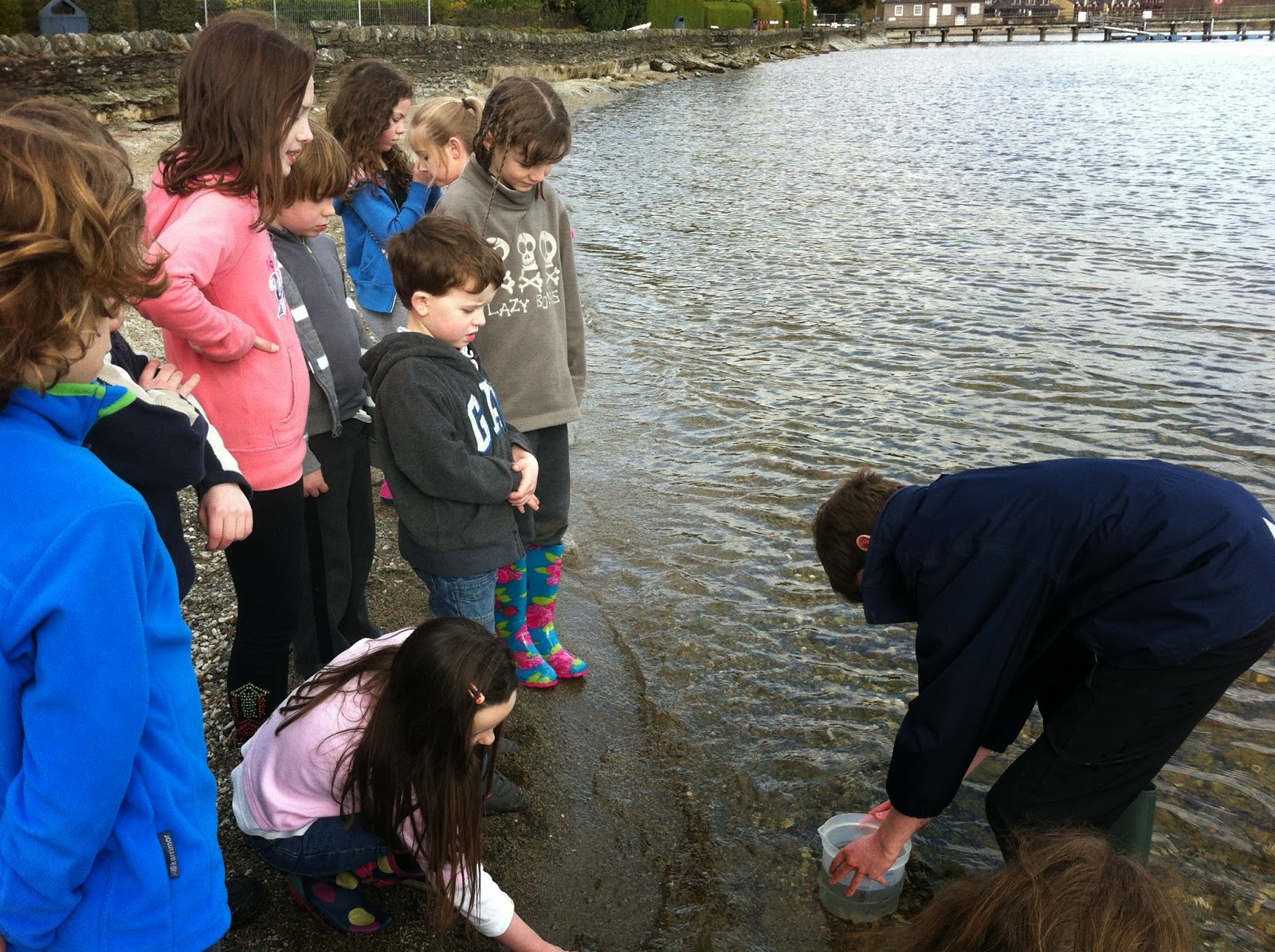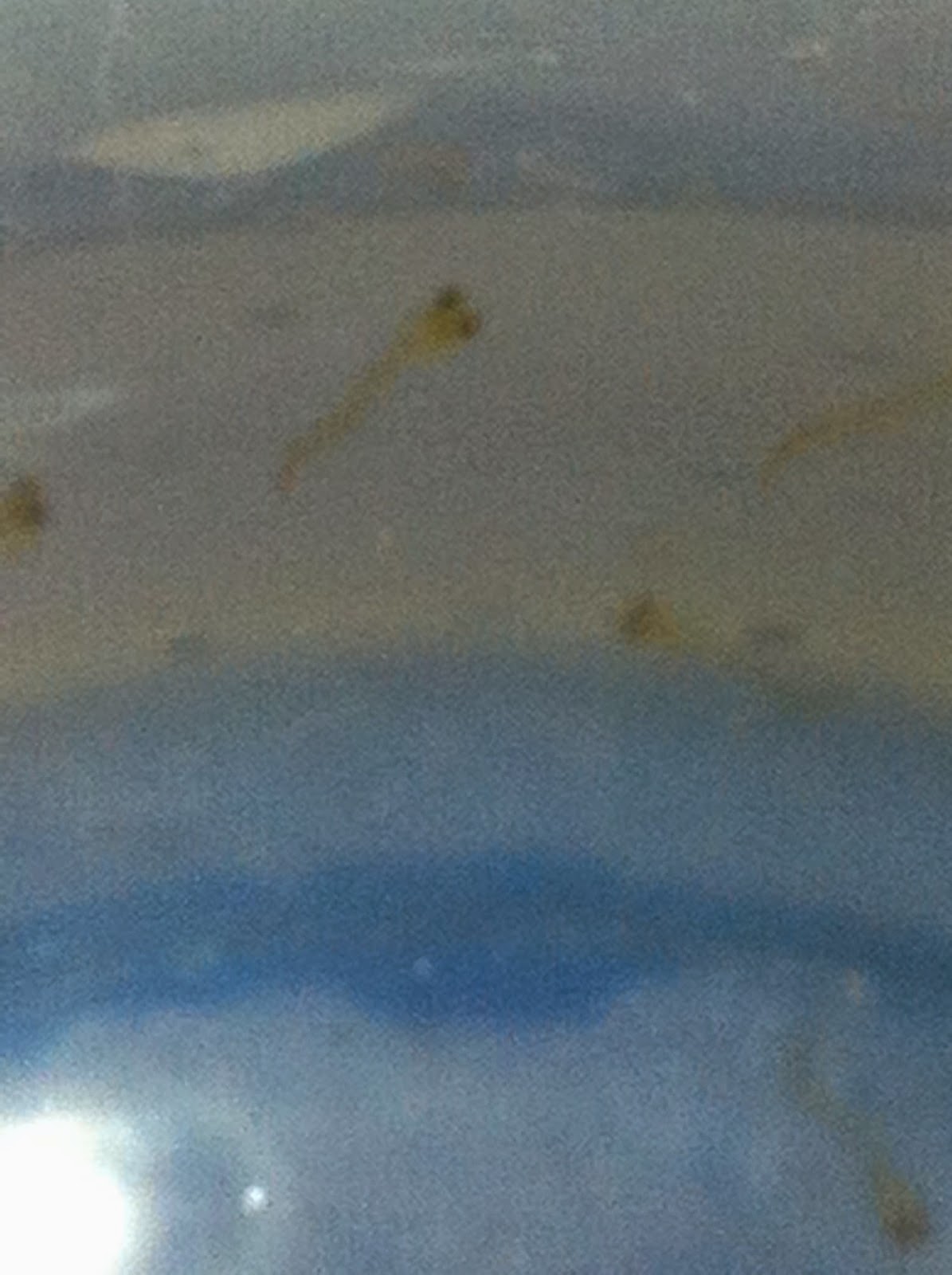I am sad that it is the end of term as we don't get to do the powan blog. But next year we hope to have the powan again and the blog. That makes me happy.
By Savannah
Thursday, 26 June 2014
Wednesday, 4 June 2014
We loved our visit from Ms. Bryce and Mr. Adams from the Loch Lomond Fisheries Trust. We are invited in the autumn to the Scottish Centre for Ecology and Natural Environment to take part in sampling and counting the various species of fish in Loch Lomond. This centre is run by Glasgow University.
P5-7 pupils.
Friday, 30 May 2014
Thursday, 29 May 2014
Thursday, 22 May 2014
Thursday, 8 May 2014
Thursday, 1 May 2014
Thursday, 24 April 2014
Thursday, 10 April 2014
Wednesday, 9 April 2014
Tuesday, 8 April 2014
Monday, 7 April 2014
Great news! Yesterday seven fish hatched and were swimming around when they were checked at lunch-time! We added some loch water to make sure that they had enough nutrients. This also helps to prepare them for the temperature of the loch. The pictures are a little blurred as they are darting around the tank.
Friday, 4 April 2014
Thursday, 3 April 2014
Tuesday, 1 April 2014
Monday, 31 March 2014
Thursday, 27 March 2014
Yesterday the rangers had brought things that meant we could see things the way a fish would. It was amazing! What we did was put some water in and some insects and looked at them. There was a big one which we put in the loch. I didn't have any wellies so I couldn't see into it properly but I bet it was awesome.
By Mollie
By Mollie
Yesterday, when the rangers came we went kick sampling in the river. This disturbs the insects so we can count them. Isla and I found a blood worm and a mayfly. The mayfly was trying to eat the worm. Then we put the mayfly into a tub to look at it more closely. We always put the insects back carefully into the river.
By Savannah
By Savannah
Wednesday, 26 March 2014
Monday, 24 March 2014
Friday, 21 March 2014
The powan, a freshwater herring is found in two lochs in Scotland. It is believed to be a descendent of the herring family, having been stranded during the Glacial period when Loch Lomond was first cut off from the sea. Like herring, the powan has to be netted. The most common fish in the loch is pike.
By Logan
By Logan
We have some rules for the powan tank in the classroom.
- Never put your hands into the tank.
- Don't do anything at the tank without getting permission.
- Make sure the water is around 4 degrees, or they will hatch too early.
- Make sure the lid is closed at all times.
- Be careful not to let any eggs go beside the frozen water bottles.
- Move the eggs carefully using a pipette, if this happens.
Wednesday, 19 March 2014
Sunday, 16 March 2014
Thursday, 13 March 2014
Other interesting facts we have learnt about the powan.
The powan is a freshwater whitefish. The powan is a protected species and must not be caught by anglers. It is a distinctive silvery fish with a dark bluish or green back. It has large fins, can grow up to 46cm and can weigh as much as 900grams. Powan can be found all over Loch Lomond. They lay their eggs (spawn) in early January. 60 to 70 days later the eggs hatch into small fish (fry) only 12mm long. They can live up to 10 years in the right conditions.
Today we are going to start by sharing a few facts about the powan fish.
The powan live in Loch Lomond and also Loch Eck. The powan is an Ice Age fish.
By Athena.
The powan live at the bottom of the loch and like it dark, cold and well-oxygenated. The females go to the shallows to lay their eggs.
By Logan.
The powan eggs are very delicate and very special.
By Kinvara.
Powan are an endangered species of fish and we must protect them from the ruffe.
By Savannah.
The ruffe are a species of fish introduced to the loch by fishermen as bait. They eat the powan eggs but not the powan fish.
By Olivia.
The fish eggs develop eyes that appear as black dots.
By Evelyn.
When a powan egg dies, it changes from transparent to white in colour.
By Isla.
Powan eggs take a while to hatch. We need to keep them cold until they hatch and release them into the loch before the yolk sac runs out.
By Mollie.
The powan live in Loch Lomond and also Loch Eck. The powan is an Ice Age fish.
By Athena.
The powan live at the bottom of the loch and like it dark, cold and well-oxygenated. The females go to the shallows to lay their eggs.
By Logan.
The powan eggs are very delicate and very special.
By Kinvara.
Powan are an endangered species of fish and we must protect them from the ruffe.
By Savannah.
The ruffe are a species of fish introduced to the loch by fishermen as bait. They eat the powan eggs but not the powan fish.
By Olivia.
The fish eggs develop eyes that appear as black dots.
By Evelyn.
When a powan egg dies, it changes from transparent to white in colour.
By Isla.
Powan eggs take a while to hatch. We need to keep them cold until they hatch and release them into the loch before the yolk sac runs out.
By Mollie.
Wednesday, 12 March 2014
Tuesday, 11 March 2014
Subscribe to:
Posts (Atom)






























